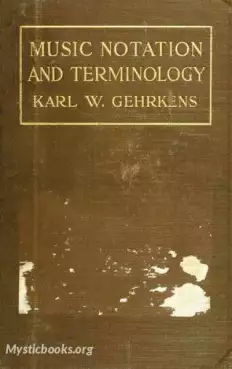
Timeline
Title
Country/Nationality
Karl Wilson Gehrkens
Karl Wilson Gehrkens was born on Kelleys Island in Lake Erie, Ohio on April 19, 1882, the youngest child of Henry Frederick Gehrkens and Elizabeth Ricker. Influenced by the seminary students of the Oberlin Theological Seminary (the Oberlin College Graduate School of Theology after 1916), who preached at the Congregational Church on the island, he enrolled in the preparatory Academy of Oberlin College for the Winter Term of 1899 and entered Oberlin College in the fall of 1900. His major subjects were psychology and education in the College and organ and theory in the Conservatory of Music. He received the A.B. degree in 1905, the A.M. in Psychology in 1912, and the Mus. D. (hon.) from Illinois Wesleyan University and from Capital University in 1939. In 1943, Oberlin College awarded Gehrkens the Alumni Medal.
After graduating from Oberlin College in 1905, Gehrkens began teaching algebra and German in the Oberlin High School, conducting the school choir, and offering piano lessons. During his second year as a high-school teacher, he was invited to conduct the school chorus. Subsequently, he took charge of all music teaching in the public schools of the Village of Oberlin.
In 1907, Gehrkens was recruited by the Oberlin College Conservatory of Music to head the School Music Department as Teacher of Public-School Music. During his thirty-five years of service, Karl Gehrkens singlehandedly pioneered public school music education at the Conservatory and set national standards for training music teachers. He was promoted to Instructor in 1908, Associate Professor in 1912, and Professor of School Music in 1917, a post he held until his retirement in 1942. During the summer of 1917, he studied educational psychology at Columbia University Teachers College under educational philosophers John Dewey (1859-1952) and William Heard Kilpatrick (1871-1965).
As Teacher of Public-School Music at Oberlin Conservatory, Gehrkins offered the “Public School Music Course,” a two-term curriculum enrolling fifteen students which he gradually expanded by creating his own courses. By 1921, the music education curriculum drew over one hundred students and included four years of coursework in the fields of applied music, music theory and history, educational psychology, school organization, practice teaching, and related courses in the humanities. In the spring of 1923, the Conservatory became the first institution in the country to award the degree of Bachelor of School Music. Guiding Gehrkens’ philosophy of education were the beliefs that teaching is an art and the teacher must be an artist to succeed in the classroom.
Gehrkens was a vigorous supporter of the budding music education profession at the national level. For thirty-six years, he was an active member of the Music Teachers National Association (M.T.N.A.), which held its first meeting in Oberlin in 1906. He served as M.T.N.A. president during 1934/35 and editing the M.T.N.A. Proceedings from 1917 to 1939. He was also president of the Music Educators National Conference (1923), becoming one of the first of its members to advocate theKarl Wilson Gehrkens establishment by the M.E.N.C. of a permanent business office and publication headquarters. He served as a member of the M.E.N.C. Executive Committee from 1930 to 1934. The catch phrase he coined in 1922, “Music for Every Child—Every Child for Music,” became the organization’s official slogan.
An accomplished scholar, Gehrkens’ first book, Music Notation and Terminology, (Chicago: Laidlaw Brothers), published in 1914 in conjunction with his music education courses, earned for him the A.M. degree in 1912. There followed Essentials in Conducting (Boston: Oliver Ditson, 1919), An Introduction to School Music Teaching (Boston: C. C. Birchard & Co., 1919), Fundamentals of Music (Boston: Oliver Ditson, 1924), Handbook of Musical Terms (Boston: Oliver Ditson, 1927), Twenty Lessons in Conducting (Boston: Oliver Ditson, 1930), Universal School Music Series (New York: Hinds, Hayden & Eldredge, 1923-36), a series of song book and teachers’ manuals for use in grade and high schools prepared with Walter Damrosch and George Gartlan, Music in the Grade Schools (Boston: C. C. Birchard, 1934), Music in the Junior High School (Boston: C. C. Birchard, 1936), The Teaching and Administration of Music in the High School (Boston: C. C. Birchard, 1941) with Peter W. Dykema. He served as editor of School Music (1925-34), Department Editor for The Etude, as editorial writer for Educational Music Magazine and contributed frequently to other music periodicals. He was Music Editor for the second edition of Webster’s New International Dictionary of the English Language.
In 1905, Karl Gehrkens married organist Ruth Grey Bedford.
Karl Gehrkens retired in 1942 at age 60, suffering from heart trouble. He died in Bellaire, Michigan on February 28, 1975.
Books by Karl Wilson Gehrkens

Music Notation and Terminology
Until relatively recently, music students at all levels of study—from the conservatories to public schools—had few resources available for the formal study of musical notation and terminology in the classroom. In fact, it was not until 1914, when Pro...